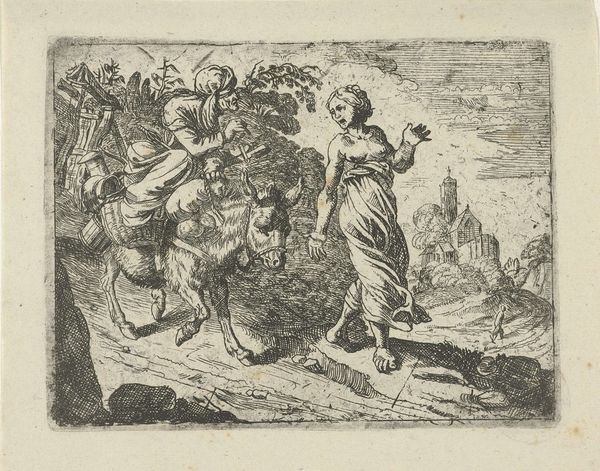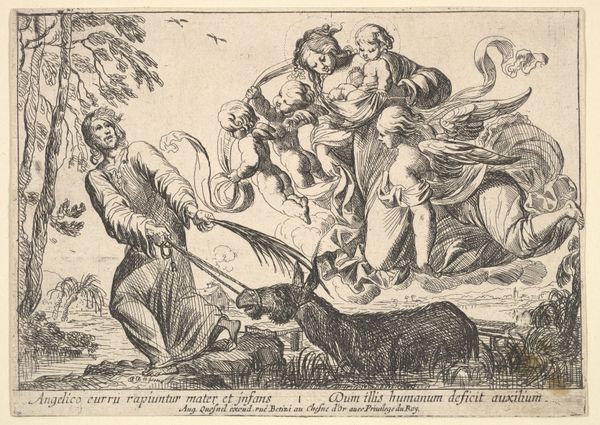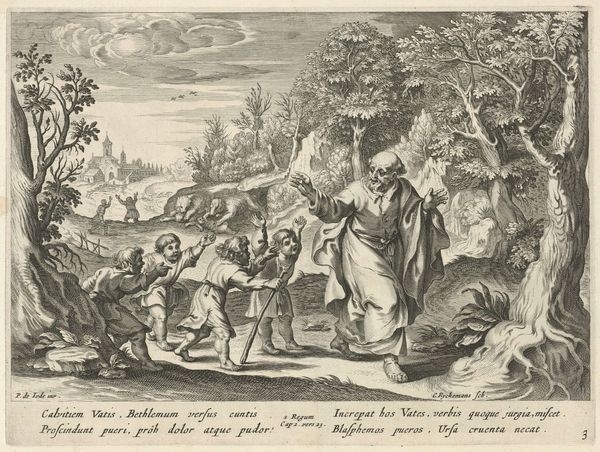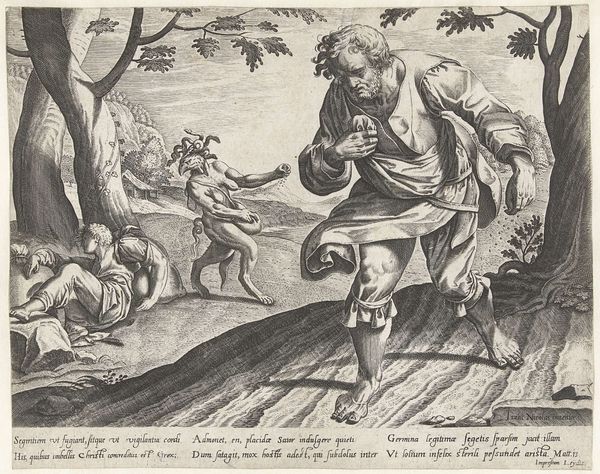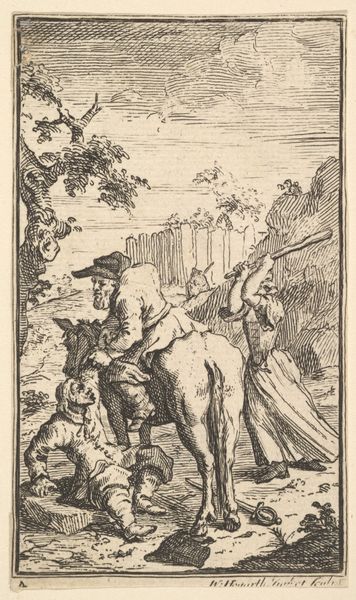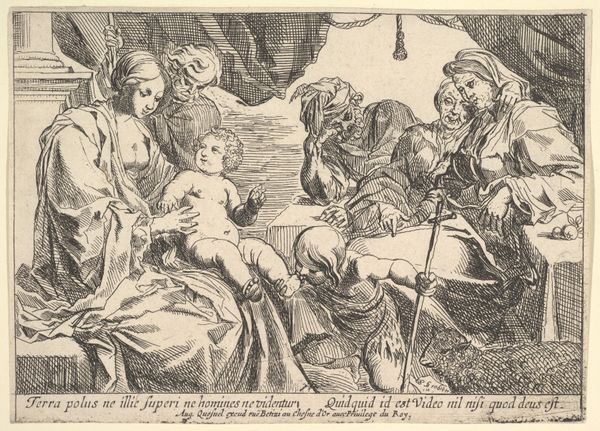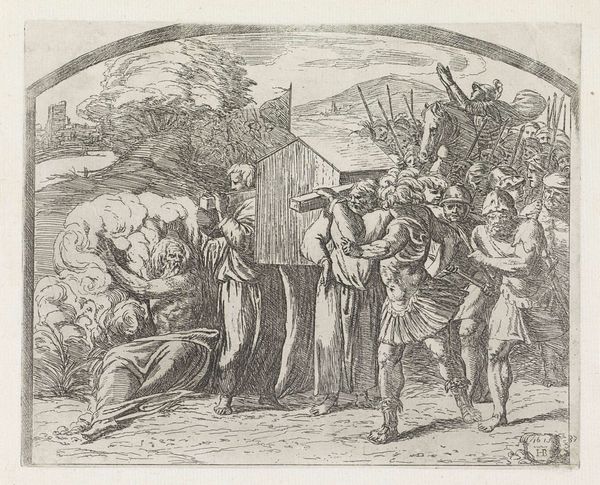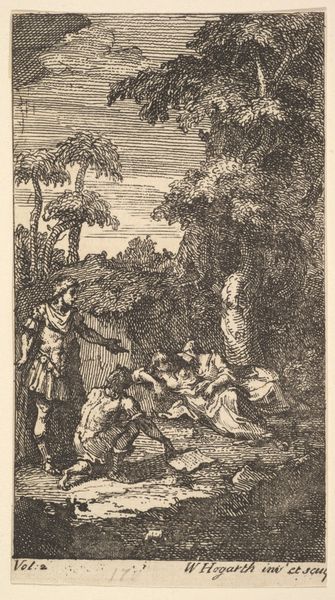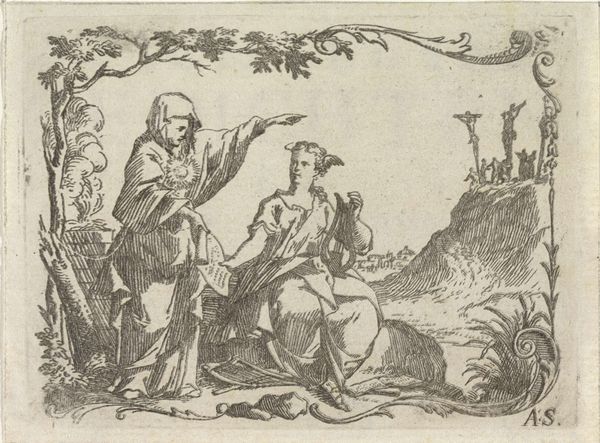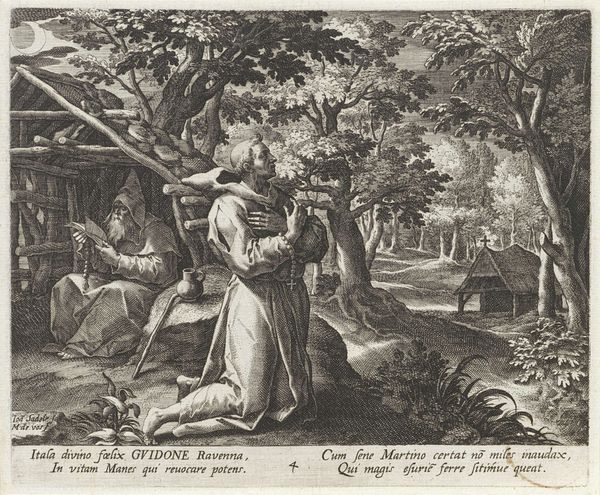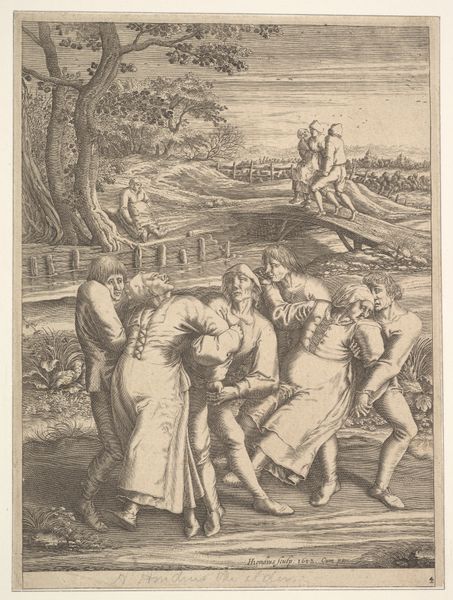
drawing, print, engraving
#
drawing
#
narrative-art
# print
#
figuration
#
child
#
italian-renaissance
#
engraving
#
angel
Dimensions: 4 1/2 x 6 1/4 in. (11.4 x 15.8 cm)
Copyright: Public Domain
Curator: Pierre Brebiette’s engraving, "Angels Giving Dates to Child," created sometime between 1610 and 1642, presents us with a densely worked figural scene. My immediate impression is one of organized chaos. The textures, lines, and values, even in this monochrome, convey a sense of dynamism. Editor: Indeed. And a first glance tells me it’s not just a pretty picture. Look at the characters, especially the child seemingly reaching out. I see a statement about the vulnerability of childhood amidst an exodus and resource scarcity, heightened by religious implications. Curator: We must consider Brebiette's strategic use of line—note how it creates volume, depth, and separation within this bustling composition. The etching lines, with varying weights and densities, help to distinguish each figure from its surrounding elements and the stark landscapes. Editor: Absolutely. And how about we interpret this compositional approach? Consider how this era witnessed religious conflicts—the forced migrations. By embedding an emotionally complex scene in stark and forbidding environs, Brebiette underscores his era’s turmoil as felt even by its youngest individuals. Curator: Let’s not disregard the artistic context. The Italian Renaissance valued an accurate portrayal of the human form, with this piece offering prime examples, despite some distortions within a landscape setting. We have an understanding of balance; each character relates specifically to another via diagonal arrangements, offering unity despite chaotic texture. Editor: The text inscribed on the artwork suggests an anti-Herodian sentiment. "Why do you rage, Herod, raging in vain? The boy with his mother seeks the air of Pharia." This direct address certainly situates the work as a bold commentary on the powers and political events within his contemporary sphere. Curator: A fascinating intersection of medium and content. The rigorous structure supports narrative depth, highlighting Brebiette’s artistic mastery and intellectual rigor. Editor: Brebiette uses these familiar stories of journeys to amplify his concerns about contemporary problems—he is advocating and speaking to experiences across cultures. Let's not forget the importance of empathy and social responsibility within an early modern period.
Comments
No comments
Be the first to comment and join the conversation on the ultimate creative platform.
